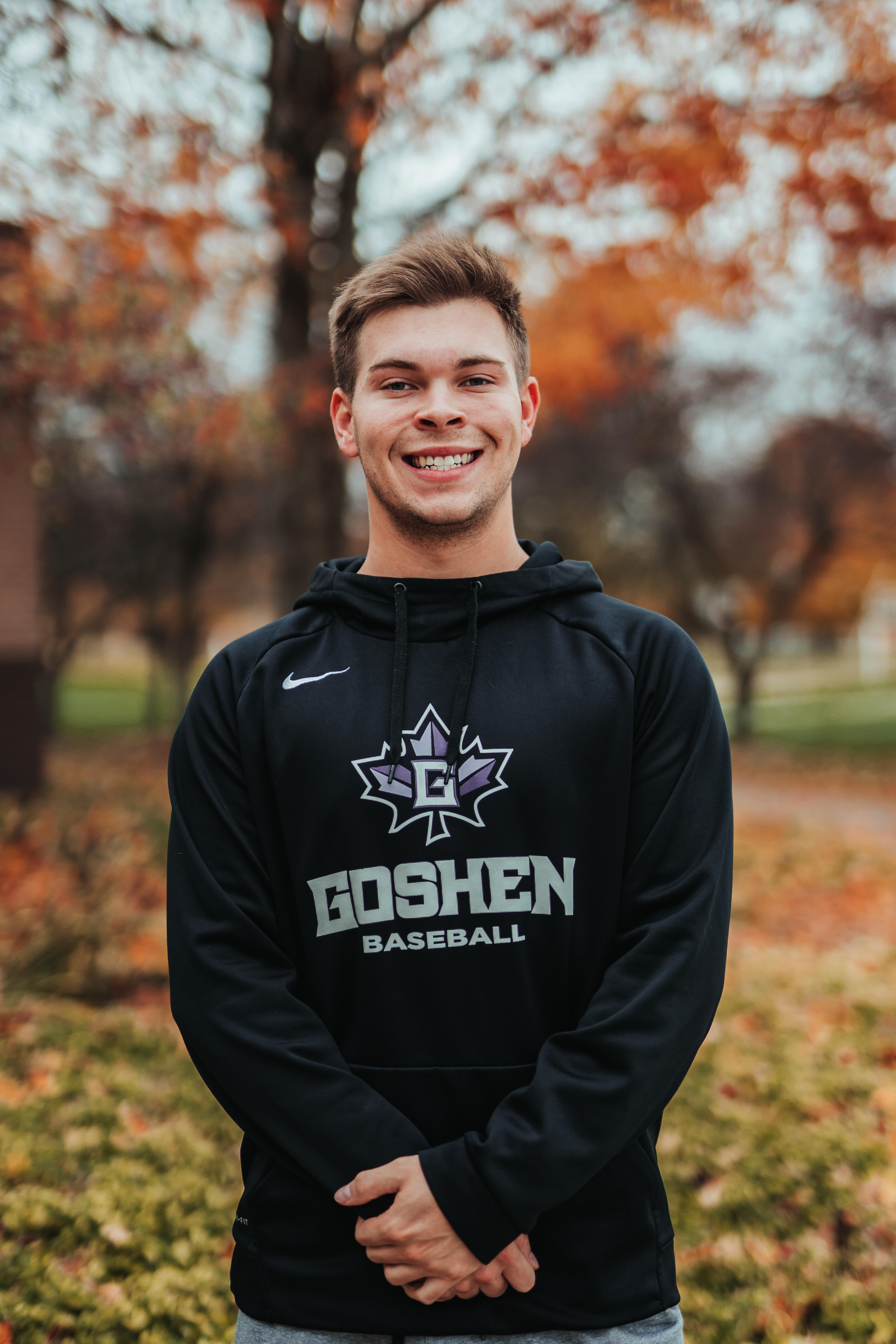“Focus,” I told myself as I looked across the baseball diamond at my coach, who was patiently waiting for my attention. I zoned in, waiting for my coach’s base running sign to be called. He started to run a series of decoy signs until giving me the sign to steal the next base. He ended his signs with a clap. I confirmed with a tilt of the bill of my helmet. Got it. We were on the same page.
Earlier that day, I sat silently in a classroom of fifteen people. My professor signed “Good morning, how are you?” I replied in a brief response by having my right hand open, fingers spread, tapping my chest with my thumb. This sign means “fine.” Communication happens without words more than you know.American Sign Language is often an afterthought in the communication community. It doesn’t attract as much attention or use as other languages. Recently, I decided that the language of choice in which I would study at Goshen College would be ASL, not knowing the challenges, degree of difficulty or the different meaning behind everything in which was being taught.
On the first day of my ASL class, I found myself wandering into a classroom of silence. After waiting patiently, my teacher finally walked into the room. Immediately it was established that she couldn’t hear, because she is deaf. Instantly I couldn’t help but think “How am I going to be able to learn and understand this?”
But the lesson began, and classes continued. I found myself learning rapidly and understanding the movements right away. It felt so familiar reading the hand signals in which are being demonstrated in front of me.
After awhile I started to figure out why I was picking up on sign language so fast. It was from playing football and baseball my whole life. Throughout the time period of me playing sports, using signs and messages through hand signals is a huge part of both of the games. Each sign has a meaning, or play. Then, it’s my responsibility to know what to do once that play call is in, needing to understand in full depth what’s going on. The connection between the two is so similar. For me it wasn’t about learning sign language at this point. It’s simply a game of memorization and muscle memory.
Sports and ASL don’t usually go hand in hand. It is normal for those playing to communicate with their voices, but when a play is getting called in from the sideline, you can’t just yell out what you are doing. The silent hand signals used by the coaches are ways of communicating to us as athletes; the play call, what to do, how to do it, and where to do it. For example, you’re on first base, running bases, during a baseball game. You look over to your coach on the third base side, he is doing a series of signs, which I must break down, find my sign, its meaning, and how to execute. This is my coach telling me to do something, without speaking, so when I know a certain sign means something, I know how to do it.
Would sign language be able to consistently survive in a sports environment? I think it could be hard to participate in a sport with teammates without being able to communicate verbally. Being able to speak to one another when needed to in sports can be a huge part as to how a team plays. If an individual or duo were to play a sport together, I think that would be different because there wouldn’t be as much communication needed, as much as just the physical aspect.
Does ASL belong in the sports world? The possibility of using it as a way to communicate to one another provides huge benefits for those athletes that know it vs. those who don’t. I think that it could only do positive things in sports. I think that it could also benefit more than just athletics. ASL is a trending form of communication in which could bring a vast amount of success to many people’s daily lives. The coexistence of sports and ASL are more subtle, not many people would think the two would or could even correlate. Hopefully, sports can find a way to get ASL more involved in the future.


